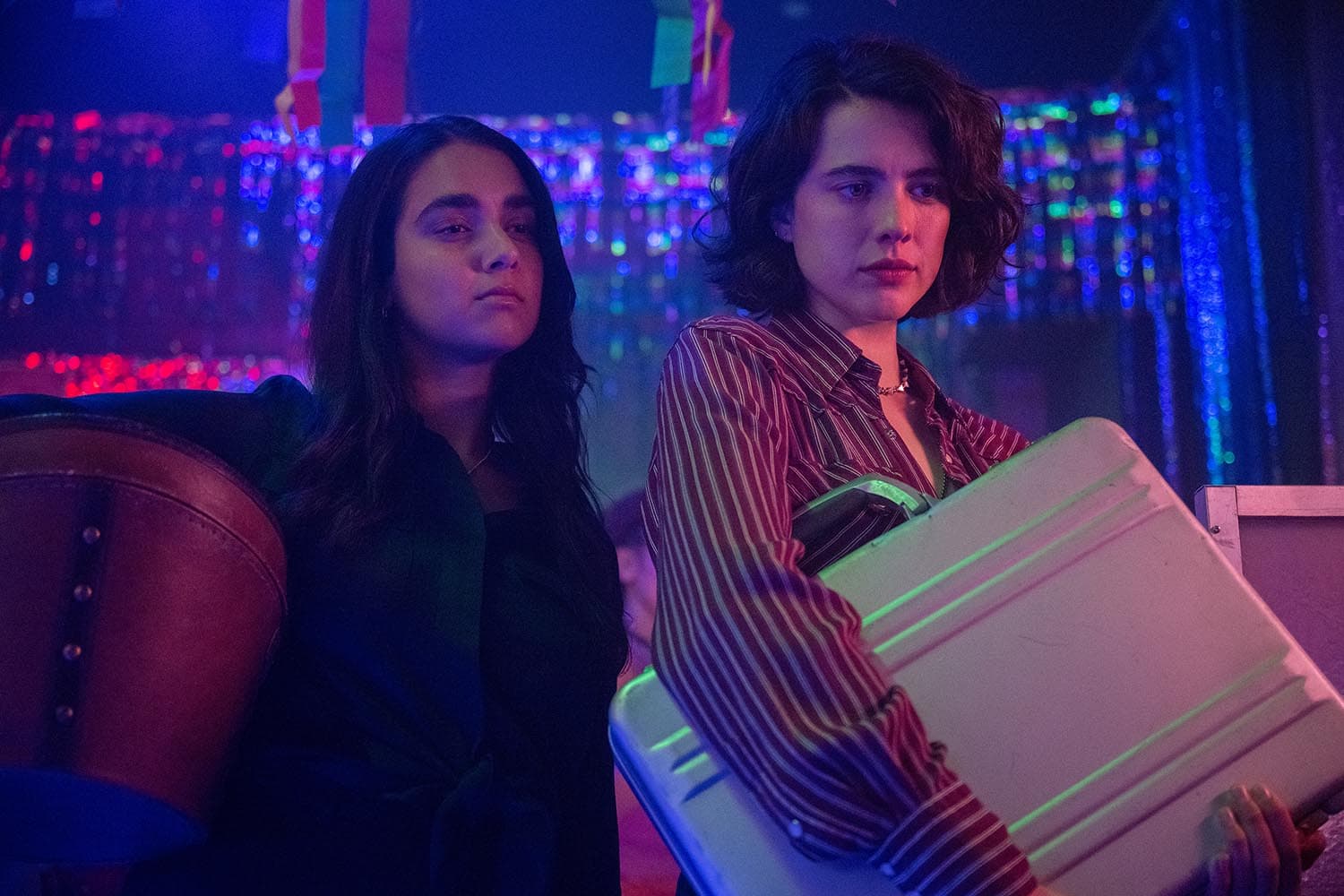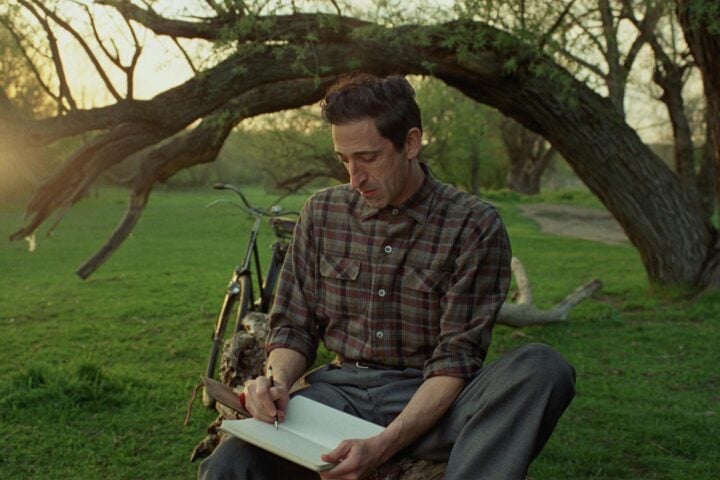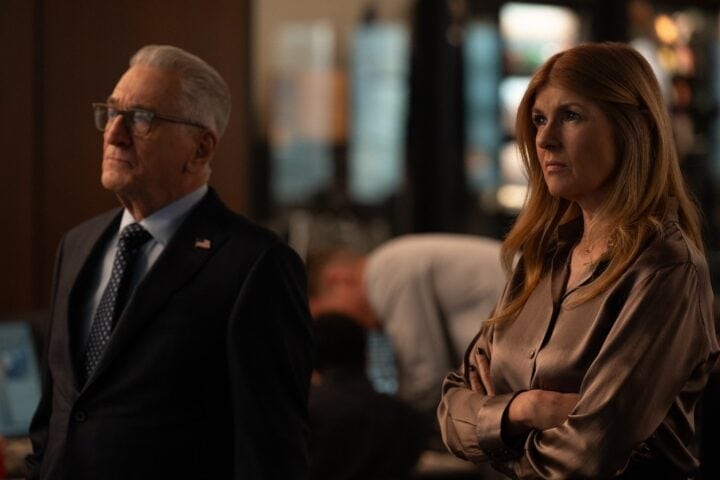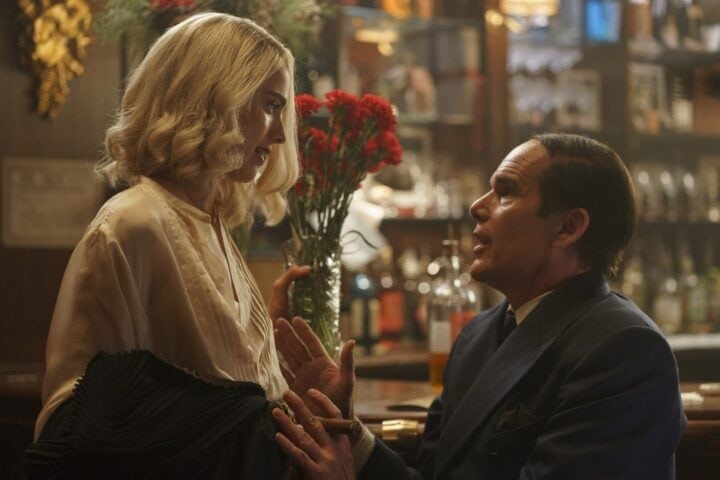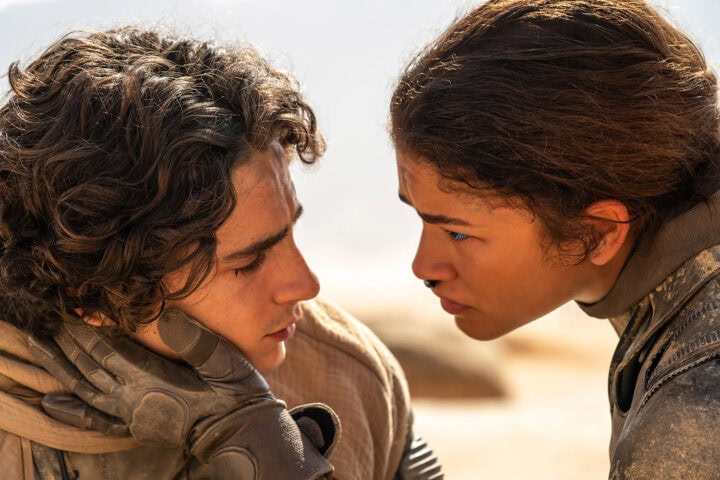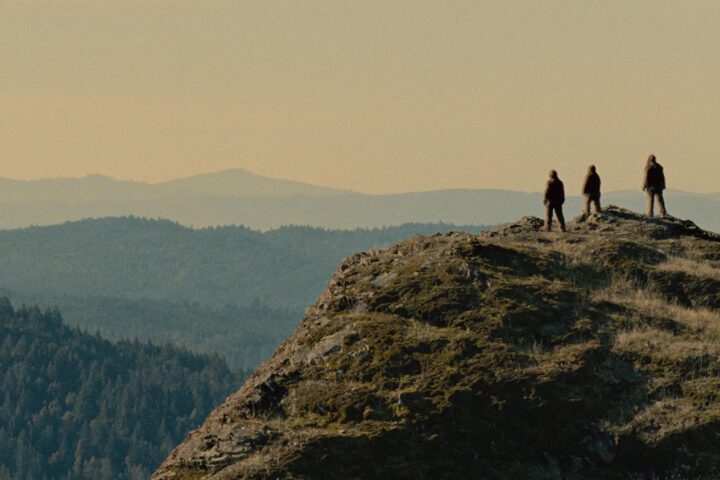Ethan Coen’s Drive-Away Dolls certainly pulls from the aesthetic and narrative party bags of noir and road movies. It even indulges the pleasures of high lesbian camp as two friends are drawn into a government-connected conspiracy. But to call it pastiche, a term that could be handily affixed to any number of films by the Coen brothers, is inadequate here given the rollicking, casual, intimate nature of Drive-Away Dolls’s relationship to its generic forebearers. In the classic queer punk tradition of Bruce LaBruce, John Waters, and Gregg Araki, Coen’s film knows when to pay homage and when to move to its own rhythm.
In its curious way, the film’s formulation of sameness and difference—conveyed through the way that it invokes everything from Faster, Pussycat! Kill! Kill! to Kiss Me Deadly, as well as through the yin and yang of fuckgirl Jamie (Margaret Qualley) and the more reserved Marian (Geraldine Viswanathan)—can be read as a treatise on the most pleasurable examples of divergence, subversion, and queering. Written by Coen and his longtime editor and partner, Tricia Cooke, the film isn’t exactly mired in the death-drive anxiety of many classic noirs, but it’s preoccupied with taking such tropes and rendering them as jokes of a masculinist style.
If the potential self-seriousness of a getaway trip and someone’s severed head might take another pair to Vegas or Los Angeles, Drive-Away Dolls announces its parodic spirit with its destination as Florida, surely the funniest state in the union. Sparked by Jamie’s desire to escape any number of the hearts she’s broken, she cajoles Marian to tag along, especially as it’ll serve as an occasion for her to unleash her inhibitions. The silver briefcase full of something we don’t see until the end of Drive-Away Dolls, left in the same car that Jamie and Marian rent to take down to Tallahassee, transforms into a funny bit that’s both an object lesson in lesbian culture and a cutting joke about noir’s thematic obsession with male insecurity.
Ari Wegner’s slick cinematography banks not on shadows and textural gradations of light and dark, but rather their waxy and uncanny mirror image. In lesbian bars, alleyways, and on the road, the filmmakers imagine the road trip as having a candy-colored depthlessness, an ironic inversion of the typical smoky imagery of films about dames on the run. It’s all smooth and neon-bathed, a sweet and syrupy study of sapphic culture that recalls more the delightful femme revisionism of the spy romp D.E.B.S. than it does the grittier Bound.
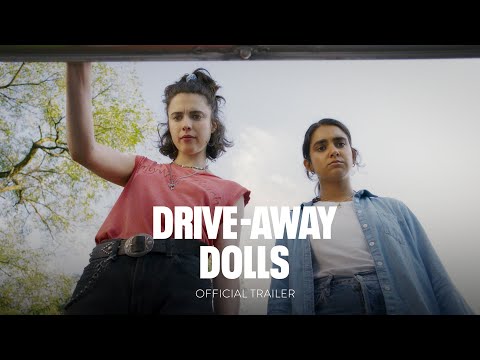
The absurdist suffering that defines Blood Simple, A Serious Man, and Barton Fink, even The Lebowski’s climax, is mostly absent here, framing Drive-Away Dolls as an antidote of sorts. Jamie and Marian’s obstacles, from a blown-out wheel on the highway to the skittishness of lesbian intimacy versus jovial detachment, feel airy. If, in most of the Coen brothers’ films, men are obsessed with their own downfall, be it from those around them or some divine prankster, Drive-Away Dolls, centered around two women who seem to be able to let what they face fall off their shoulders with a wink, is primarily about having a good time while it can still be had.
This gives Coen room to play with the camera in more formally abrasive ways than one might expect, pushing his cast to match the silliness of a canted angle shot from the pedal of the getaway car with rubbery expressions of shock and dismay, particularly from the nimbly expressive Qualley. Gloss is juxtaposed with vociferous stylishness, and as the camera whips around Jamie and Marian’s topsy-turvy world, Drive-Away Dolls luxuriates in a style that suggests a cartoon penned by Dorothy L. Sayers. The anxieties that permeate less stylistically and tonally adventurous works of this ilk are undermined by a waggish sense of humor and fun, even as the political uncertainty that undergirds so much noir, as well as the sense of the ambivalent self that’s the theme of so many road movies, attempts to blow these girls’ tires out.
Drive-Away Dolls considers the way in which it will be situated—in the Coen brothers’ work, in the history of noir and road movies, in lesbian cinema—with a long drag of a cigarette that’s thrown out the window as Jamie and Marian’s rental car hurdles down the highway. The film makes its clever references, nods to the ways in which particular genres have shaped an American aesthetic sensibility tied to notions of gender, sexuality, and politics, then burns rubber, making its getaway with a sapphic sense of humor about how tragically silly nihilistic morbidity can be, especially when there’s so much fun and freedom to be found on the horizon.
Since 2001, we've brought you uncompromising, candid takes on the world of film, music, television, video games, theater, and more. Independently owned and operated publications like Slant have been hit hard in recent years, but we’re committed to keeping our content free and accessible—meaning no paywalls or fees.
If you like what we do, please consider subscribing to our Patreon or making a donation.

